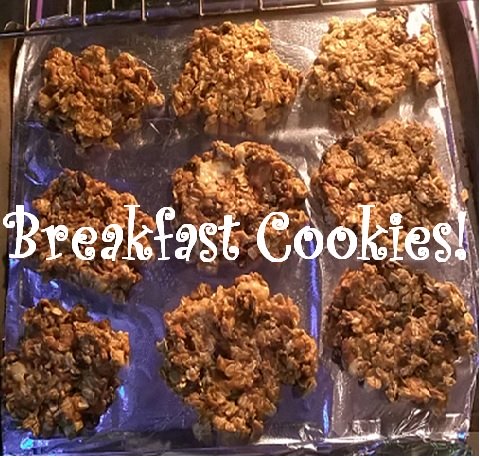Fermented Food 101
Have you been hearing murmurs about fermented food? Or perhaps someone has even been shouting about it? Here, I will give a beginner’s course on why all the talk and how to take action.
Let’s start at the beginning…
Probiotics are so popular. We want them to:
|
 |
There are new strains being discovered every day, it seems, and the research is following.
Read more about probiotics and what they are here.
Along comes fermented food, which actually has existed in nearly every culture since food preparation has been documented. Kimchi, sauerkraut, kefir, yogurt, and sourdoughs are just the beginning of the list.
These fermented foods come with a HUGE array of naturally occurring probiotics, oftentimes combined with helpful prebiotics, too. (Prebiotics are substrates that help probiotics thrive in the gut. Just look at this list…
Species of lactic acid bacteria that were isolated from raw or spontaneously fermented vegetables and fruits.
|
Lactic acid bacteria species
Lactobacillus pentosus Lactobacillus rossiae Lactobacillus fermentum Lactobacillus curvatus Lactobacillus brevis Lactobacillus paraplantarum Leuconostoc mesenteroides subsp. mesenteroides Weissella soli Weissella confusa, Weissella cibaria Enterococcus faecalis, Enterococcus faecium Pediococcus pentosaceus |
Source
Pineapple French beans, red beets, capers, eggplants, melon pod Peppers Tomatoes, capers, eggplants, cabbages, cucumbers, melon pod Cabbages, capers
Carrots Peppers, tomatoes, blackberries, papaya French beans, tomatoes, capers, melon pod French beans, tomatoes, cucumbers, capers, cherries, cabbages |
From Di Cagno et al, 2013
The probiotics in foods are doing great, health-promoting things!
Research has shown relief for women with recurring yeast infections when they ate yogurt with live cultures for 6 months. Another study showed that fermented milk increased beneficial immune activity, and this result lasted up to 3 weeks after their last glass of probiotic-laden creaminess. These are just a couple of many examples of how the science is validating the consumption of probiotics and probiotic-containing foods.
Read more about the science behind different strains of probiotics and the ailments they may relieve here.
But the newest question is, why ferment foods instead of buying a convenient probiotic pill?
First of all, fermented food includes the food! Fruits and vegetables are the primary source of vitamins, minerals, fiber, and phytochemicals for humans. Food fermentation has acted as a way to prolong the harvest for centuries. In fact, lactic acid fermentation has been scientifically proven as a way to preserve or enhance the safety, nutrition, shelf-life, and flavor of foods.
There are several reasons to add fermented food to your diet, in addition to increasing probiotic colonies in the gut, including…
- Fermented foods go beyond probiotics and combine it with a plethora of nutritional value. Bacteria (the beneficial probiotic bacteria) actually convert the foods into new substances. They can synthesize B vitamins, and fatty acids, for example – both of which are beneficial to the gut, immune system, and body as a whole. And that’s just fermented milk. Some fermented vegetables can have increased levels of antioxidants, as another example.
- Fermented foods contain bacteria that have begun digesting complex proteins, carbohydrates, and/or fats, which facilitates digestion.
- Fermented foods (like all raw foods) offer enzymes to further bolster the body’s normal digestive processes.
- Fermentation creates an environment that is “bio-preservative.” The creation of different compounds during fermentation, such as antibiotics, antifungals and hydrogen peroxide, to name a couple, antagonize the development of pathogenic bacteria, thereby increasing the food’s shelf-life.
Not all fermented foods are capable of increasing probiotic colonies in the gut, but they do all carry the advantages of these added benefits.
While raw fruits and vegetables are populated with sufficient microbiota to support fermentation, commercial “starters” are available. These starters can be purchased and added to fermenting projects in order to reduce variability, ensure success, and in some cases, improve the texture and/or flavor of the final product. They will also determine the strains that are most likely to inhabit your final product, which makes starter cultures a good idea if there are specific strains of probiotics that you desire.
Including whey as a substrate for the probiotic bacteria is in many popular recipes. Those who are sensitive to dairy may or may not be sensitive to whey-containing fermented foods. It is best to consult with your health care provider, and start small if you know you have a dairy sensitivity, lactose intolerance, or an allergy. Lactose will be depleted by the busy bacteria in fermented dairy products, but often there is enough remaining lactose to aggravate sensitive individuals.
Here are some helpful websites with recipes to get you started:
Yogurt Recipes
I went with the dairy-free varieties for my own personal reasons. The cow’s milk versions are similarly easy
and plentiful
… and, Fermented Nut Cheese at Green Divas
Vegetables and Fruits
These sites have many recipes for fermented foods. There are plenty of sites that have one or
two great recipes, I’m sure. But start
your browsing here.
References
Di Cagno, R, R Coda, M De Angelia, M Gobbetti. “Exploitation of vegetables and fruits through lactic acid fermentation.” Food Microbiology. Feb 2013; 33(1): 1-10.
Dorsey, N, J Neimark. “Fermentation made simple.” Natural Health. Mar/Apr 2013; 43(2): 50-55.
What is your favorite fermented food? Have you made any at home? Share below...
Go to The Science of Natural Health Homepage from Fermented Food 101
Disclaimer: This article may contain affiliate links. You will never pay extra for an item because you used my link. I only include items that I would purchase myself, and websites that I love. The few pennies I receive from purchases simply support my ability to share the science.
Note: This page may contain
affiliate links. You get the great product that I would recommend
anyway at the normal price, and I get a few pennies to to support my
love for Sharing the Science. You can check out my Privacy Policy, too.
I'm Zara, PhD
Hello. I'm a neurobiologist turned mother and business owner, sharing the science of natural health and putting it into practice. More...




New! Leave a Comment